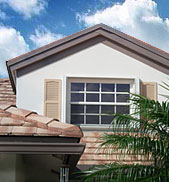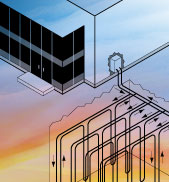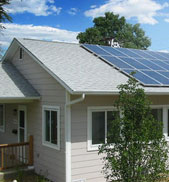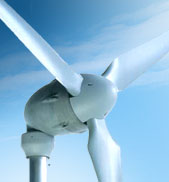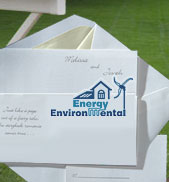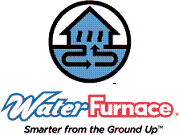Types of Ground Loops
Ground loops are a series of polyethylene pipes buried underground that contain a water-ethanol mix to prevent freezing. There are several basic types of ground loop systems that can be used for commercial and residential buildings. Horizontal, vertical, and pond/lake are all closed-loop systems, while a fourth type of system is the open-loop system. Closed systems use a continuous loop where the heat transfer fluid/water is continuously circulated. The most common ground loops found in residential systems are horizontal and vertical loops. The geographic location, climate, soil, and available land are all factors which determine they best type of system for a specific home. Larger homes requiring more heating or air conditioning and homes in climates with extreme temperatures generally need larger loops.
Open-loop systems use ground water from an aquifer that is piped directly from the well to the building, where it transfers its heat to a heat pump and then discharged back into the ground. Open loop systems are somewhat obsolete and can cause damage to the water source.
Horizontal Ground Loops
Horizontal ground loops are the most cost effective and common system for residential homes, when enough land is available to lay out a system and trenches are easy to dig. Piping is laid in trenches which range from 100 to 400 feet in length. Horizontal loops typically require 100-300 ft of trench with 600-1200 ft of pipe per ton.

Figure courtesy of Waterfurnace
Vertical Ground Loops
Vertical loops tend to be used in urban areas because of the restriction of available land for horizontal loops. They are also used if the soil is too shallow or difficult to trench. Drilling equipment is used to bore small-diameter holes from 100 to 400 feet deep, twenty feet apart. Pipes place in these holes are connected at the bottom with a u-bend to form a loop. Each vertical pipe is then connected to a horizontal underground pipe that carries fluid to and from the indoor heat exchange pump. Vertical loops are generally more expensive to install, but require less piping than horizontal loops because the Earth's temperature is warmer and more stable farther below the surface Vertical loops typically require 150-300ft 6 inch boreholes with 300-500ft of piping per ton.

Figure courtesy of Waterfurnace
Pond/Lake
A less common, but lower cost alternative closed loop system is a pond/lake system, which is only applicable it the site has an adequate water body that reaches a minimum volume, depth and quality. A pipe is run underground from the building to the water and coiled into circles deep enough under the surface of the water to prevent freezing. Fluid circulates underwater through the pipe in a closed system, just as it does through vertical and horizontal ground loops. Since it is a closed system, there are no harmful effects on the aquatic system.
How Geothermal Heat Pumps Work
Benefits and Efficiency of Geothermal Heat Pumps
Installation and Cost


